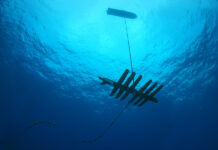Uncrewed, high-altitude surveillance balloons could soon be used by the UK armed forces to enhance national security following recent trials spearheaded by the UK Ministry of Defence’s Defence Equipment & Support organisation (DE&S).
The trials were conducted earlier this year in South Dakota, in the United States, as part of Project Aether: a concept development initiative launched by members of DE&S’ Future Capability and Innovation (FCI) team. The team has since transitioned to become part of UK Defence Innovation (UKDI) under the National Armament Directorate (NAD).
The trials were led by UK company Voltitude in partnership with Landguard Systems (UK) and Aerostar (US) using UK-developed technology. With a current intelligence, surveillance, and reconnaissance (ISR) payload capacity of up to 3 kg, the test balloons can operate continuously for over five days, operating at altitudes between 60,000 and 80,000 ft (18, 288 to 2,4384 m).
As well as ISR payloads the balloons could also be used to deliver reliable communication and fast internet connectivity to disaster zones or remote areas, as well as support climate research by providing data for weather forecasting.
The balloons thus offer a low-cost surveillance and communications capability as an alternative to traditional solutions, with the ability to travel uninterrupted at extreme altitudes for extended periods without requiring maintenance.
“The findings from these trials will now be used to build upon this significant advancement in stratospheric surveillance, exploring whether the balloons can carry heavier payloads for longer durations, with the aim of enabling missions lasting between 6 and 12 months,” DE&S stated in a 28 July 2025 press release.
“Stratospheric technology like this could transform how we operate in complex environments, keeping our people safer and better informed than ever before,” UK Minister for Defence Procurement and Industry Maria Eagle was quoted as saying by DE&S. “This successful trial is another example of UK defence pushing boundaries, with real potential to strengthen our future capabilities.”
Initial interest from the British War Office in the use of balloons followed the successful deployment of tethered observation balloons in the American Civil War (1861-1865). It was in 1878, however, that Captain James L B Templer, an officer in the Middlesex Militia and a keen amateur balloonist, was charged with designing and building the first British military balloon, Pioneer, at Woolwich Arsenal. A hydrogen balloon, Pioneer was constructed for just 71 British pounds and is considered to represent the birth of the British air arm.






![The continuing evolution of tube artillery The 8×8 variant of the CAESAR SPH on display at the Eurosatory 2024 exhibition. [Tank Encyclopedia, courtesy photo]](https://euro-sd.com/wp-content/uploads/2025/08/caesar-8x8-at-eurosatory-2024-Kopie-218x150.jpg)






